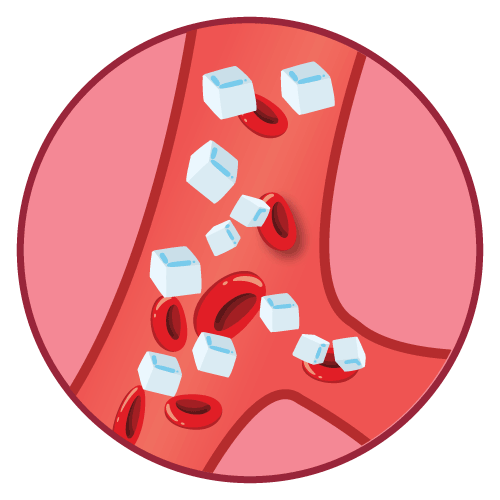Medicine details
| Image |  |
| Name | Apidra |
| Dosage | Injection |
| Generic Name | Insulin Glulisine |
| Classes |
Insulin Insulin Analogue Hormonal Agent Peptides/Polypeptides |
| Diseases | |
| Company | Sanofi Aventis (BD) Ltd. |
Drug Package Details
| Strength | 100 IU/ml |
| Storage Condition | |
| Origin Country | Bangladesh |
| Commercial Pack | 5 |
| Price per pack | ৳ 9,951.40 |
| Cost per pack | ৳ 8,757.23 |
| Package unit | 3 ml pre filled pen |
| Price per unit | ৳ 1,990.28 |
| Cost per unit | ৳ 1,751.45 |
| Discount | 0 |
| Coupon | |
| Remarks |
Insulin Glulisine
Insulin Glulisine is a rapid acting human insulin analog. Insulin's main function is to regulate glucose metabolism. Insulin reduces blood glucose levels by boosting skeletal muscle and adipose glucose absorption and blocking hepatic glucose synthesis. Insulins suppress lipolysis, proteolysis, and gluconeogenesis while boosting protein synthesis and fat conversion.
Insulin Glulisine dosage must be tailored to the individual. Blood glucose monitoring is essential in all insulin-treated patients. The total daily insulin requirement varies, but it is typically between 0.5 and 1 Unit/kg/day. Insulin requirements can change as a result of stress, major illness, or changes in exercise, meal patterns, or medications.
Subcutaneous administration: Insulin Glulisine should be given within 15 minutes before a meal or within 20 minutes after starting a meal.
Continuous subcutaneous infusion (insulin pump): Insulin Glulisine may be administered by continuous subcutaneous infusion in the abdominal wall. Do not use diluted or mixed insulins in external insulin pumps. Infusion sites should be rotated within the same region to reduce the risk of lipodystrophy. The initial programming of the external insulin infusion pump should be based on the total daily insulin dose of the previous regimen.
Intravenous administration: Insulin Glulisine can be administered intravenously under medical supervision for glycemic control with close monitoring of blood glucose and serum potassium to avoid hypoglycemia and hypokalemia.
Insulin Glulisine can cause the following side effects-
- Hypoglycemia: Most common adverse reaction of insulin therapy and may be life-threatening
- Allergic reactions: Severe, life-threatening, generalized allergy, including anaphylaxis, can occur with any insulin, including Insulin glulisine
- Hypokalemia: All insulins, including Insulin glulisine can cause hypokalemia, which if untreated, may result in respiratory paralysis, ventricular arrhythmia, and death
- Renal or hepatic impairment: Like all insulins, may require a reduction in the Insulin glulisine dose
- Mixing: Insulin glulisine for subcutaneous injection should not be mixed with insulins other than NPH insulin. Do not mix Insulin glulisine with any insulin for intravenous administration or for use in a continuous infusion pump
- Pump use: Change the Insulin glulisine in the pump reservoir every 48 hours
- Intravenous use: Frequently monitor for hypoglycemia and hypokalemia.
Contraindication
Contraindicated in patients hypersensitive to insulin glulisine or any of its excipients.
None known.
Contraindicated during Hypoglycemia.



 Bangla
Bangla English
English